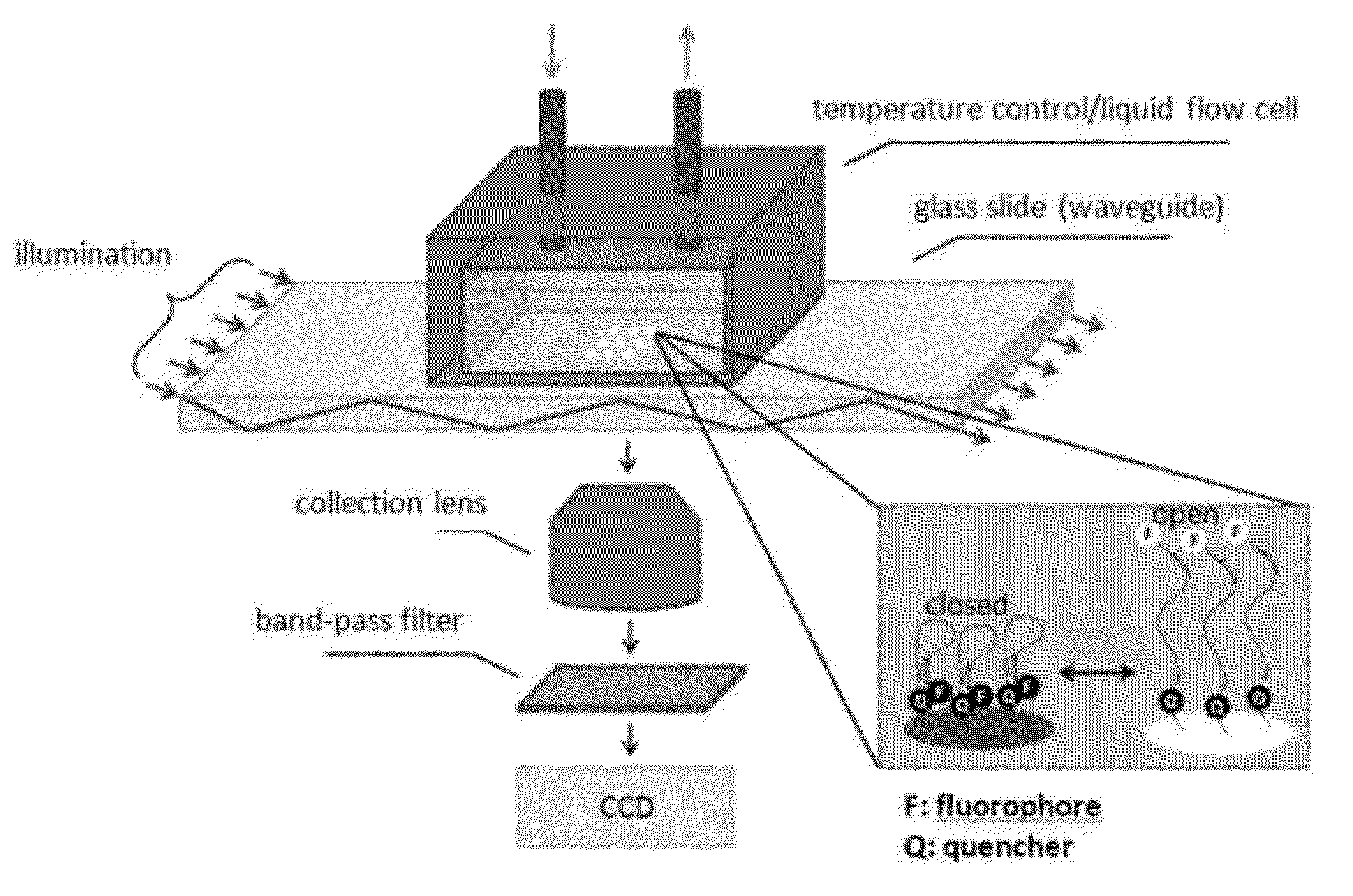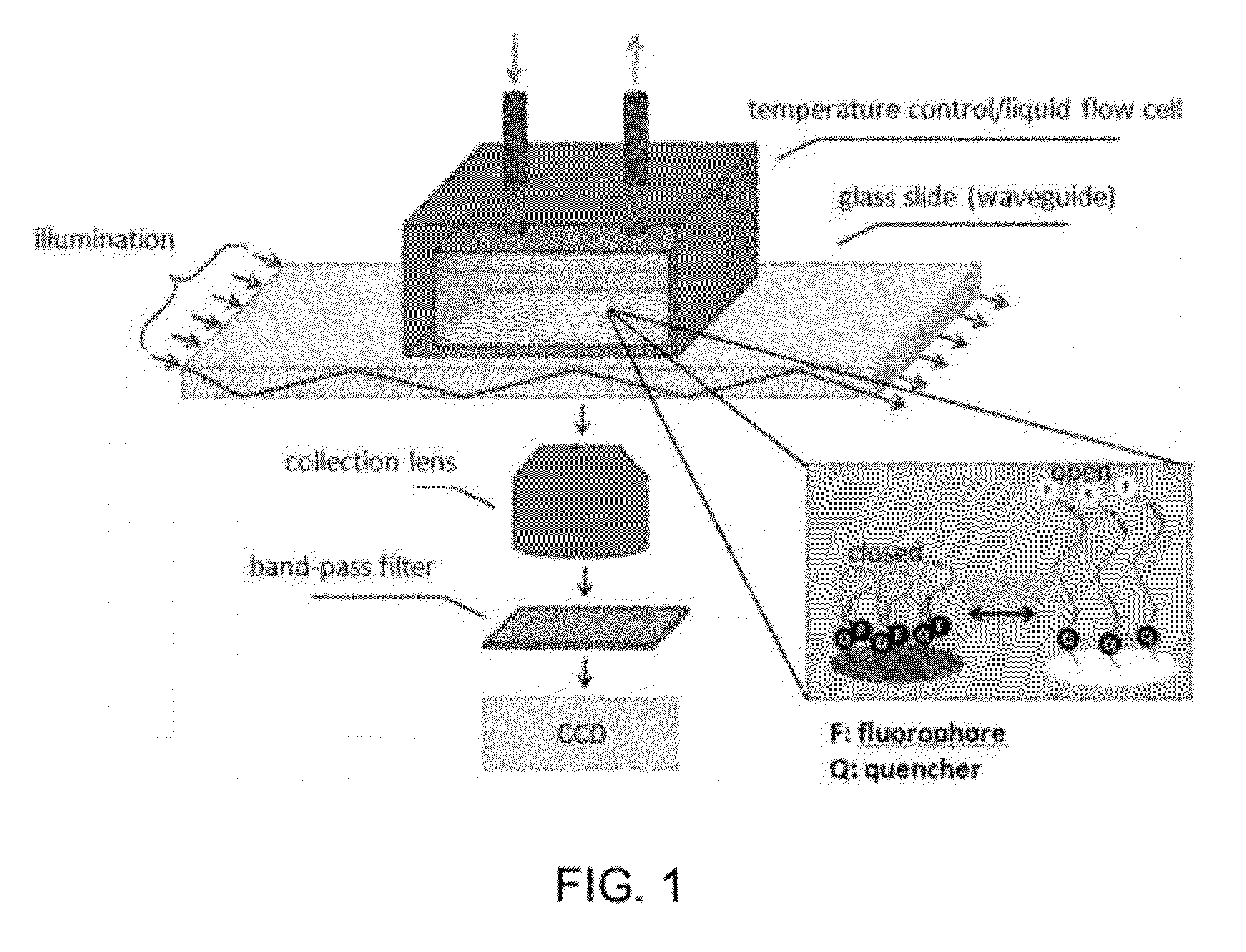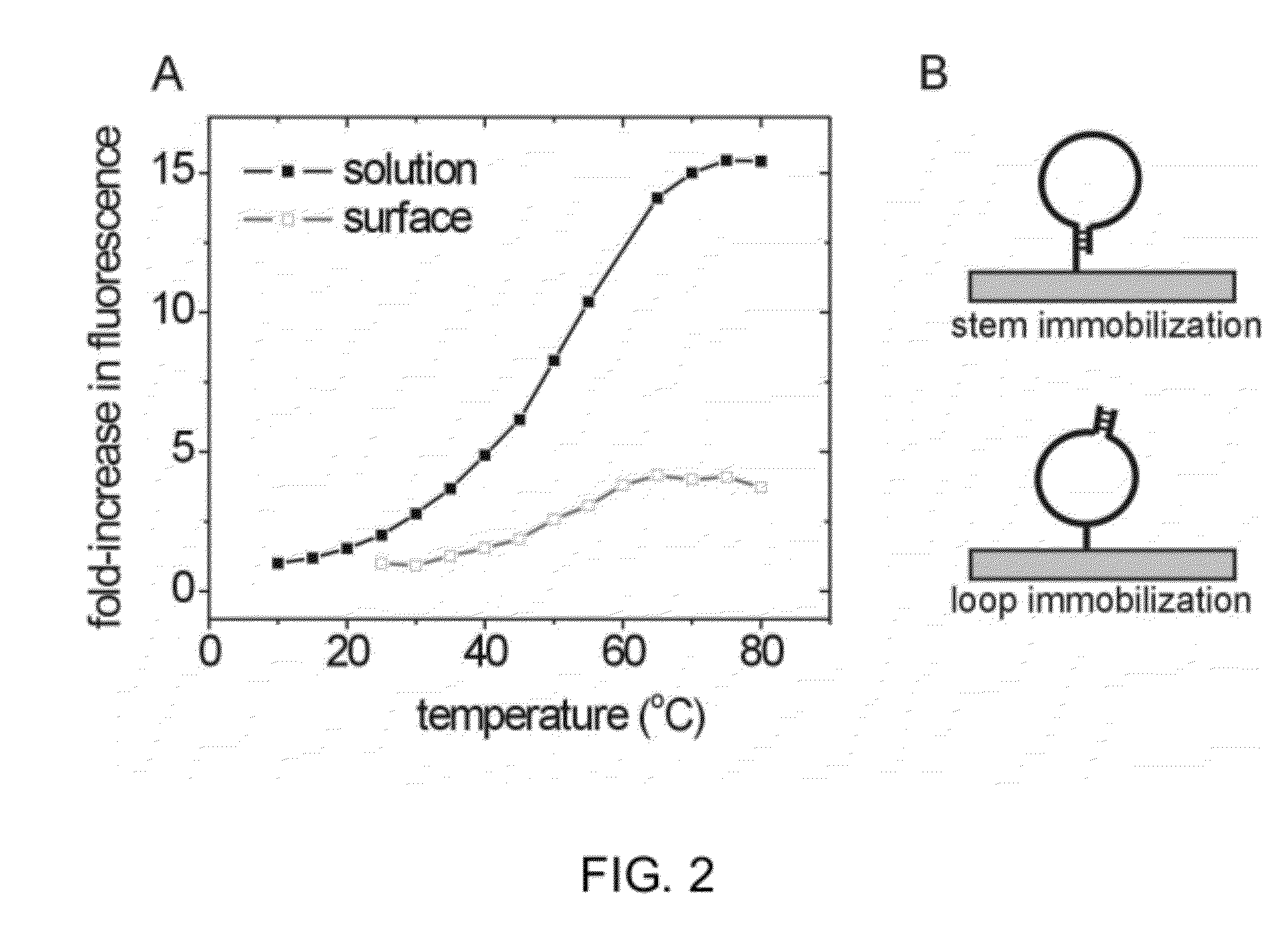Solid phase methods for thermodynamic and kinetic quantification of interactions between nucleic acids and small molecules
- Summary
- Abstract
- Description
- Claims
- Application Information
AI Technical Summary
Benefits of technology
Problems solved by technology
Method used
Image
Examples
examples
[0140]Fluorescent Monitoring of BA-NA Interactions.
[0141]Using a MB DNA construct with the sequence 5′ Fluorescein-CAATTCCTCT12GAATTG-BHQ1-C7-Amine 3′, where underlined bases correspond to the MB stem, an approximately 14-fold fluorescence gain was observed in solution with a TM close to 50° C., FIG. 2A. BHQ1 is Black Hole Quencher 1, and the 3′ amine is used for surface immobilization via the stem. Repetition with the same MBs printed on commercial aldehyde microarray slides produced a 4-fold gain with transition observed at a similar temperature, FIG. 2A. These data show that the denaturation transition of surface-immobilized MBs can be monitored with TIRF imaging, and that the transition occurs at temperatures close to those in solution. They also show that the response of immobilized MBs can be further optimized. Similarly suppressed gains have been reported when immobilized MBs were used in hybridization assays to detect target sequences. (56-65) In such studies, opening of the...
PUM
| Property | Measurement | Unit |
|---|---|---|
| Mass | aaaaa | aaaaa |
| Temperature | aaaaa | aaaaa |
| Composition | aaaaa | aaaaa |
Abstract
Description
Claims
Application Information
 Login to View More
Login to View More - R&D
- Intellectual Property
- Life Sciences
- Materials
- Tech Scout
- Unparalleled Data Quality
- Higher Quality Content
- 60% Fewer Hallucinations
Browse by: Latest US Patents, China's latest patents, Technical Efficacy Thesaurus, Application Domain, Technology Topic, Popular Technical Reports.
© 2025 PatSnap. All rights reserved.Legal|Privacy policy|Modern Slavery Act Transparency Statement|Sitemap|About US| Contact US: help@patsnap.com



